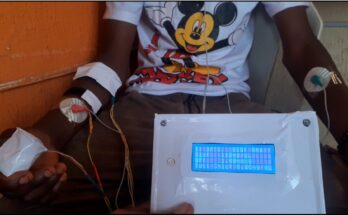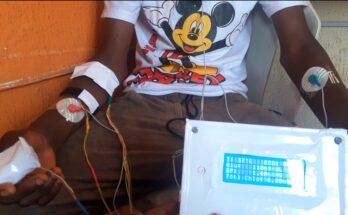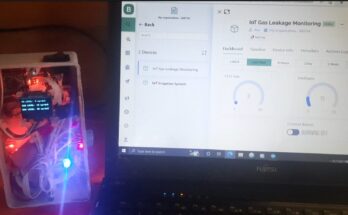Smart lighting is a rapidly growing area of home automation, and Arduino is a great platform for creating your own smart lighting projects. With Arduino, you can control your lights using a variety of sensors and inputs, such as motion sensors, light sensors, and even your smartphone. In this article, Arduino smart light control project ideas,

We’ll explore a variety of Arduino smart light control project ideas, from simple to complex. Whether you’re a beginner or an experienced Arduino user, there’s sure to be a project here that’s right for you.
Arduino Smart Light Control Project Ideas
Motion-Activated Lights

One of the most popular Arduino smart light control projects is the motion-activated light. This type of light automatically turns on when it detects motion, and turns off again after a set period of time. Motion-activated lights are great for energy savings, and can also be used for security purposes.
To build a motion-activated light, you’ll need an Arduino board, a motion sensor module, and a relay module. The motion sensor module will detect motion and send a signal to the Arduino board. The Arduino board will then activate the relay module, which will turn on the light.
Light-Activated Lights
Another popular Arduino smart light control project is the light-activated light. This type of light automatically turns on when it gets dark, and turns off again when it gets light. Light-activated lights are great for outdoor lighting, as they can help to reduce energy consumption.

To build a light-activated light, you’ll need an Arduino board, a light sensor module, and a relay module. The light sensor module will detect the ambient light level and send a signal to the Arduino board. The Arduino board will then activate the relay module, which will turn on the light when it gets dark.
Smartphone-Controlled Lights
Arduino can also be used to create smartphone-controlled lights. This type of light can be turned on and off remotely using a smartphone app. Smartphone-controlled lights are great for convenience and security.
To build a smartphone-controlled light, you’ll need an Arduino board, a WiFi module, and a relay module. The WiFi module will allow the Arduino board to communicate with your smartphone. The relay module will turn on the light when it receives a signal from the Arduino board.
Other Project Ideas
Here are a few other Arduino smart light control project ideas:
- Dimmable lights: Arduino can be used to create dimmable lights. This allows you to adjust the brightness of your lights to your liking.
- RGB lights: Arduino can be used to create RGB lights. RGB lights can display any color of light, which makes them great for creating mood lighting or decorative lighting.
- Music-reactive lights: Arduino can be used to create music-reactive lights. These lights change color and brightness in response to music, which can create a fun and festive atmosphere.
Getting Started
If you’re interested in building an Arduino smart light control project, there are a few things you’ll need to get started:
- An Arduino board
- A variety of sensors and modules, depending on the project you want to build
- A relay module
- Jumper wires
- A soldering iron (optional)
Once you have your supplies, you can start building your project. There are many tutorials and resources available online to help you get started.
Conclusion
Arduino smart light control projects are a great way to learn about Arduino and to add some automation and convenience to your home. With a little creativity, you can create a variety of different smart lighting projects that meet your specific needs.
Read More
- HOW TO GENERATE ELECTRICITY WITH FOOTSTEPS
- SOLAR POWERED IRRIGATION SYSTEM PROJECT
- ESP32 CAMERA FOR HOME AUTOMATION
- REMOVE JAPANESE HACK VIRUS FROM YOUR WEBSITE
FAQs
Q: What is the most popular Arduino smart light control project?
A: The most popular Arduino smart light control project is the motion-activated light. This is because motion-activated lights are simple to build and can be very useful for energy savings and security.
Q: What are the benefits of using Arduino for smart light control?
A: Arduino is a great platform for smart light control because it is relatively inexpensive and easy to use. Arduino also offers a wide range of sensors and modules that can be used to create a variety of different smart lighting projects.
Q: What are some tips for building Arduino smart light control projects?
A: Here are a few tips for building Arduino smart light control projects:
- Start with a simple project and gradually work your way up to more complex projects.
- Use a breadboard to prototype your circuit before soldering it together.
- Test your circuit thoroughly before installing it in your home.
- Use a good quality power supply to power your Arduino
- What all projects can you make using an Arduino?
- Arduino can be used for a wide range of projects, including but not limited to:
- Home automation systems
- Robotics projects
- Weather stations
- LED displays and lighting control
- Smart mirrors
- Security systems
- IoT (Internet of Things) devices
- Arduino can be used for a wide range of projects, including but not limited to:
- How to make cool Arduino projects?
- To make cool Arduino projects, start with simple ones and gradually increase complexity.
- Use sensors, actuators, and modules to add functionality.
- Explore online resources, tutorials, and project ideas for inspiration.
- Join Arduino communities to learn from others and share your projects.
- Which is better Arduino or Raspberry Pi?
- Arduino and Raspberry Pi serve different purposes. Arduino is better for real-time control and simple tasks, while Raspberry Pi is a full-fledged computer suitable for more complex applications like running a web server or handling multimedia tasks.
- How to control lights with Arduino?
- Use a relay module to control high-voltage lights.
- Connect the relay to Arduino and program it to switch the lights on/off based on conditions.
- Alternatively, use an Arduino-compatible light sensor or motion sensor to control lights automatically.
- What should be my first Arduino project?
- A simple LED blinking project is a great start for beginners.
- Move on to projects like a temperature sensor, basic robotics, or a simple home automation task to gain more experience.
- Can Arduino connect to WiFi?
- Yes, Arduino can connect to WiFi using WiFi modules like the ESP8266 or ESP32. These modules enable wireless communication and internet connectivity for Arduino projects.
- Where is Arduino used in real life?
- Arduino is used in various real-life applications, including:
- Industrial automation
- Medical devices
- Automotive systems
- Home automation
- Education (for teaching electronics and programming)
- Arduino is used in various real-life applications, including:
- What programming language does Arduino use?
- Arduino uses a simplified version of C/C++ for programming. The Arduino IDE provides a user-friendly interface for writing and uploading code to the Arduino board.
- Can we make robots using Arduino?
- Yes, Arduino is commonly used in robotics projects. It can control motors, sensors, and other components necessary for building robots.
- What is more powerful than Arduino?
- Microcontrollers like Raspberry Pi, BeagleBone, or more advanced development boards like STM32 or ESP32 are generally more powerful than basic Arduino boards.
- Which is better Python or Arduino?
- Python and Arduino serve different purposes. Python is a high-level programming language suitable for various applications, while Arduino uses C/C++ and is more focused on embedded systems and physical computing.
- Can Arduino run Python?
- While Arduino itself doesn’t run Python directly, there are some projects and platforms that allow you to use Python with Arduino. For example, you can use a Raspberry Pi along with an Arduino, and the Raspberry Pi can run Python scripts while communicating with the Arduino for hardware control.


